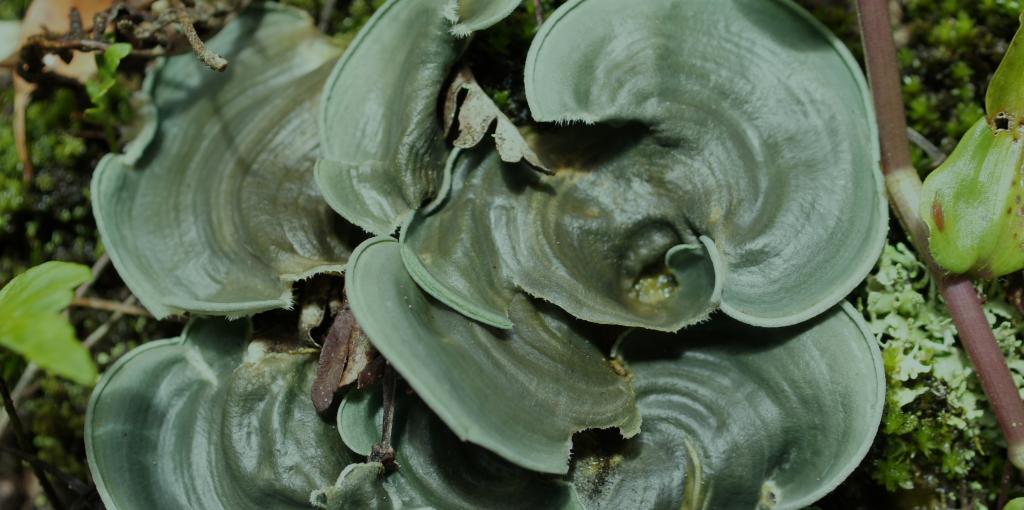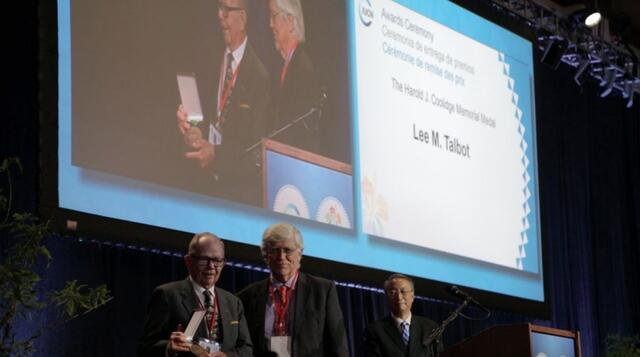Admission CTAs
Dr. Lee M. Talbot receives distinguished 2016 Harold J. Coolidge Medal at IUCN
On September 6, 2016, Dr. Lee Talbot, professor of environmental science and policy at George Mason University received the Harold J. Coolidge Memorial Medal in recognition of his “lifelong contribution in the field of international conservation, environmental affairs, and outstanding initiatives in the field of exploration.”
Established eight years ago during the World Conservation Congress in Thailand, the Harold Jefferson Coolidge Memorial Medal will go to a conservation professional who has made outstanding contributions to the conservation of nature and natural resources. The award is presented at the IUCN World Conservation Congress, which is held every four years.
At 24 years of age, Lee Talbot became the first staff ecologist for the IUCN. He was given the task of learning about species in danger of extinction across countries in both Africa and Asia. His dissertation at the University of California, Berkeley was the first ecosystem research in the Serengeti-Mara plains land of east Africa, and the first research on large-scale mammalian migrations. In addition to the scientific research results, because of his efforts, the park boundaries for the Serengeti were modified in Tanganyika (now Tanzania) and the Massai Mara Reserve was created in Kenya so that this last great migration would remain.
Along with his wife, biologist Marty Hanes, Lee Talbot embarked on multiple adventures ranging across 134 countries documenting the state of conservation and establishing plans for effective conservation management. After also working for the Smithsonian with Marty, Dr. Talbot began some of his most influential work as a scientific adviser to the President of the United States on the Council for Environmental Quality (under Presidents Nixon, Ford and Carter). During his tenure, he worked on drafting a much stronger revision of the Endangered Species Act of 1969. “The result was one of the strongest pieces of legislation ever submitted to Congress. Representative Dingell presented the revised Endangered Species Act, which was passed by the House; a similar version was passed by the Senate. President Nixon signed the bill into law on December 28, 1973.”
He also drafted the Marine Mammal Protection Act (1972), and while working with the IUCN, UNEP and UNESCO organizations, he initiated and helped draft and pass the Convention on the International Trade of Endangered Species (1973) and the World Heritage Convention (1972). These laws have arguably had more impact on the protection of endangered species than anything else then or since.
In large part because of Lee Talbot’s work, there are still humpback whales, bison, wolves, and bald eagles in the United States. Elsewhere in the world there are still elephants, gorillas, rhinos, lions, tigers, and much more. Results of the World Heritage Convention now include 203 natural heritage sites including the Great Barrier Reef, Galapagos, Serengeti, Yellowstone, Virunga and Everglades National Park.
This week the IUCN hoped to convey the world’s appreciation of Lee Talbot’s efforts by honoring him with the distinguished Harold J. Coolidge Memorial Medal.
Related article: Dr. Lee Talbot receives two distinguished lifetime awards in September 2016

